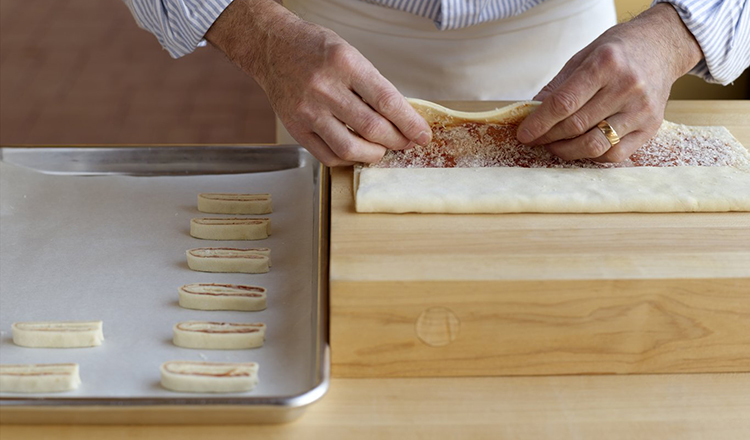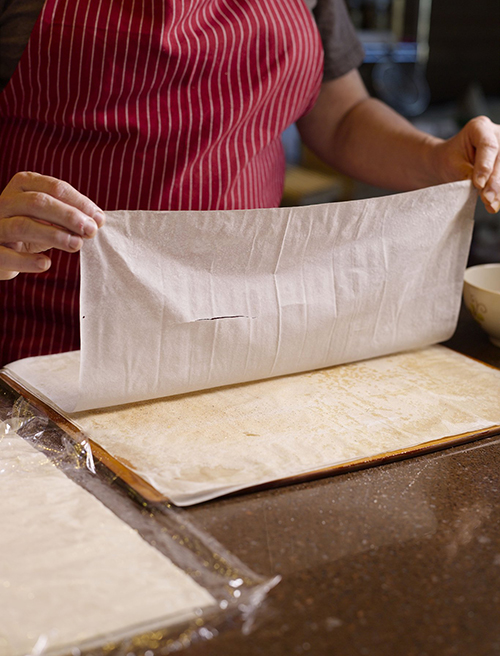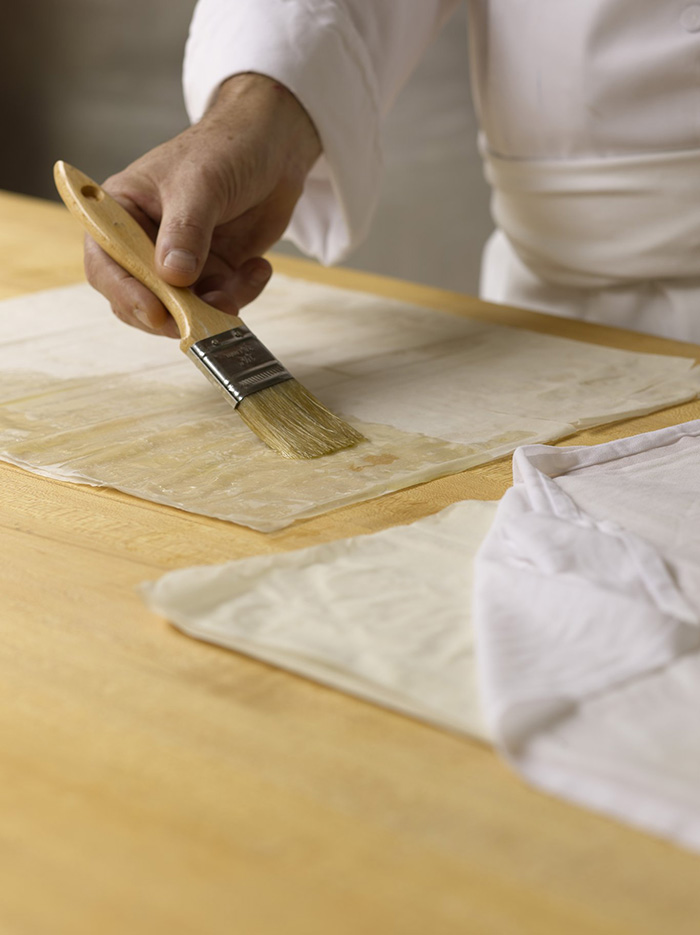
You may make your own puff pastry and phyllo dough, but many times, using a good-quality prepared pastry can be the difference between dessert or no dessert!
Luckily, both of these store-bought doughs are easy to work with and can result in perfect pastries with just some simple strategies.
Puff Pastry
Puff pastry dough is readily available in the freezer case, both as sheets and as pastry shells.
Frozen puff pastry thaws in about 8 hours in the refrigerator. Thawing it at room temperature can cause the butter in the dough to warm too much. If you do need to thaw it at room temperature, return it to the refrigerator for 15 to 20 minutes to let it firm slightly before using the dough. Keeping the pastry cold ensures that it will puff up dramatically and have a crisp texture.
To work with puff pastry, dust a flat work surface very lightly with flour. If your recipe requires rolling the puff pastry, lightly dust the top of the pastry sheet and your rolling pin with a little additional flour. Roll with even pressure over the entire surface of the dough, rolling up to but not over the edges.
Once the dough is rolled, put it back in the refrigerator to rest before cutting with a sharp knife or pastry cutter. Letting the shaped pastry chill once more before baking gives the layers of dough a chance to relax and the butter a chance to firm up, for the crispest, tallest, flakiest result.
Note that puff pastry to be used as a layer in items like Napoleons is liberally docked, or pierced, with a docker or fork to keep the pastry level and flat. You may also top the pastry with a piece of parchment paper and/or a baking sheet to weigh it down as it bakes. Remove the paper and the baking sheet to allow the pastry to brown during the last few minutes of baking.
Phyllo Dough
Phyllo dough is available in the freezer section of well-stocked supermarkets and from Greek or Middle Eastern groceries.
Thaw frozen phyllo dough either in the refrigerator overnight or at room temperature for 2 hours. Once thawed, the individual sheets should pull apart easily and be very flexible. However, contact with the air soon dries out phyllo unless it is covered.
Set up your work area so that your phyllo stays moist and flexible as you work with it. Place a large baking sheet or a piece of plastic wrap on your work surface, remove the phyllo from the box, and unroll enough sheets to make your recipe. Set the sheets flat on the baking sheet or plastic wrap. Cover the sheets completely with another large piece of plastic wrap, then lay lightly dampened paper towels or a barely moistened kitchen towel over the plastic to keep the air around the phyllo moist.

Transfer one sheet of the phyllo at a time to your flat work area and immediately re-cover the remaining sheets. Brush or spray the entire sheet with butter or oil. Your sheets may tear or crease as you transfer them or brush them with fat. That’s okay; the many layers of phyllo hide imperfections.

Keep working this way, one sheet at a time, until you have the correct number of layers for your recipe. Let the shaped or filled phyllo chill in the refrigerator before baking for the lightest, flakiest layers.
baking // pastry // puff pastry // filo
